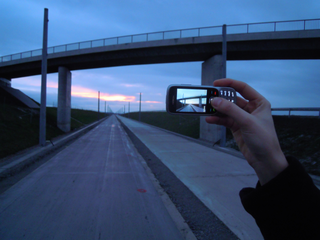
An image is a visual representation of something. It can be two-dimensional, three-dimensional, or somehow otherwise feed into the visual system to convey information. An image can be an artifact, such as a photograph or other two-dimensional picture, that resembles a subject. In the context of signal processing, an image is a distributed amplitude of color(s).

Ethnography is a branch of anthropology and the systematic study of individual cultures. Ethnography explores cultural phenomena from the point of view of the subject of the study. Ethnography is also a type of social research that involves examining the behavior of the participants in a given social situation and understanding the group members' own interpretation of such behavior.
Survey methodology is "the study of survey methods". As a field of applied statistics concentrating on human-research surveys, survey methodology studies the sampling of individual units from a population and associated techniques of survey data collection, such as questionnaire construction and methods for improving the number and accuracy of responses to surveys. Survey methodology targets instruments or procedures that ask one or more questions that may or may not be answered.

Autoethnography is a form of ethnographic research in which a researcher connects personal experiences to wider cultural, political, and social meanings and understandings. It is considered a form of qualitative and/or arts-based research.

Visual sociology is an area of sociology concerned with the visual dimensions of social life.

Laurie Toby Edison is an internationally exhibited American artist, photographer, and visual activist. Much of Edison's photography is black-and-white fine art portraits. Their current project is Pandemic Shadows. Their lifelong commitment to social justice informs all their work. Their work has been exhibited in museums and galleries around the world, including New York City, Tokyo, Kyoto, Toronto, Boston, London, Shanghai, Los Angeles, Beijing, Seoul, Budapest, and San Francisco.
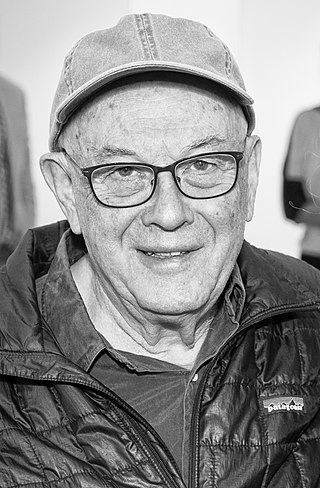
Bruce Landon Davidson is an American photographer. He has been a member of the Magnum Photos agency since 1958. His photographs, notably those taken in Harlem, New York City, have been widely exhibited and published. He is known for photographing communities usually hostile to outsiders.
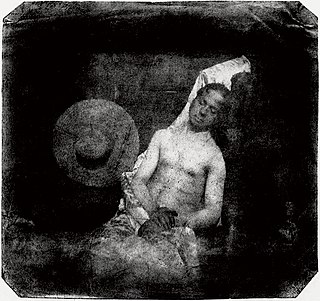
Conceptual photography is a type of photography that illustrates an idea. There have been illustrative photographs made since the medium's invention, for example in the earliest staged photographs, such as Hippolyte Bayard's Self Portrait as a Drowned Man (1840). However, the term conceptual photography derives from conceptual art, a movement of the late 1960s. Today the term is used to describe either a methodology or a genre.
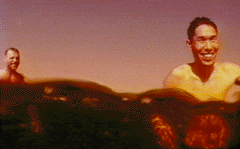
Richard Fung is a video artist, writer, public intellectual and theorist who currently lives and works in Toronto, Ontario. He was born in Port of Spain, Trinidad and is openly gay.

Nude photography is the creation of any photograph which contains an image of a nude or semi-nude person, or an image suggestive of nudity. Nude photography is undertaken for a variety of purposes, including educational uses, commercial applications and artistic creations. The exhibition or publication of nude photographs may be controversial, more so in some cultures or countries than in others, and especially if the subject is a minor.

Art history is the study of aesthetic objects and visual expression in historical and stylistic context. Traditionally, the discipline of art history emphasized painting, drawing, sculpture, architecture, ceramics and decorative arts; yet today, art history examines broader aspects of visual culture, including the various visual and conceptual outcomes related to an ever-evolving definition of art. Art history encompasses the study of objects created by different cultures around the world and throughout history that convey meaning, importance or serve usefulness primarily through visual representations.

The diagonal method (DM) is a rule of thumb in photography, painting and drawing. Dutch photographer and lecturer Edwin Westhoff discovered the method when, after having long taught the rule of thirds in photography courses, he conducted visual experiments to investigate why this rule of thirds only loosely prescribes that points of interest should be placed more or less near the intersection of lines, rather than being rigid and demanding placement to be precisely on these intersections. Having studied many photographs, paintings and etchings, he discovered that details of interest were often placed precisely on the diagonals of a square, instead of any "strong points" that the rule of thirds or the photographic adaptation of the golden ratio suggests. A photograph is usually a rectangular shape with a ratio of 4:3 or 3:2, from which the diagonals of the photograph are placed at the bisection of each corner. Manually placing certain elements of interest on these lines results in a more pleasing photograph.
The feminist method is a means of conducting investigations and generating theory from an explicitly feminist standpoint. Feminist methodologies are varied, but tend to have a few common aims or characteristics, including seeking to overcome biases in research, bringing about social change, displaying human diversity, and acknowledging the position of the researcher. Questioning normal scientific reasoning is another form of the feminist method.
Susan Hogan is a British cultural historian. Hogan is Professor in Cultural Studies & Art Therapy at the University of Derby.
Visual research is a qualitative research methodology that relies on artistic mediums to produce and represent knowledge. These artistic mediums include film, photography, drawings, paintings, and sculptures. The artistic mediums provide a rich source of information that has the ability to capture reality. They also reveal information about what the medium captures, but the artist or the creator behind the medium. Using photography as an example, the photographs taken illustrate reality and give information about the photographer through the angle, the focus of the image, and the moment in which the picture was taken.
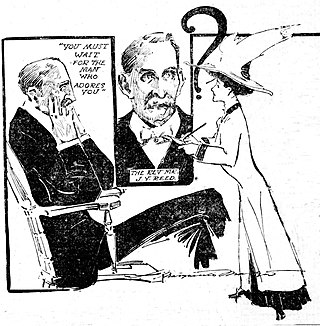
An interview in qualitative research is a conversation where questions are asked to elicit information. The interviewer is usually a professional or paid researcher, sometimes trained, who poses questions to the interviewee, in an alternating series of usually brief questions and answers. They can be contrasted with focus groups in which an interviewer questions a group of people and observes the resulting conversation between interviewees, or surveys which are more anonymous and limit respondents to a range of predetermined answer choices. In addition, there are special considerations when interviewing children. In phenomenological or ethnographic research, interviews are used to uncover the meanings of central themes in the life world of the subjects from their own point of view.
The International Visual Sociology Association (IVSA) is an international association for "visual sociology, visual studies, visual ethnography, documentary film and photography, public art, arts-based research, and visual literacy and education." The association holds annual conferences and publishes the journal, Visual Studies.
Carolyn Ellis is an American communication scholar known for her research of autoethnography, a reflexive approach to research, writing, and storytelling that connects the autobiographical and personal to the cultural, social, and political. Her research centers on how individuals negotiate identities, emotions, and meaning making in and through close relationships.
Bildwissenschaft is an academic discipline in the German-speaking world. Similar to visual studies, and defined in relation to art history, Bildwissenschaft refers to a number of different approaches to images, their interpretation and their social significance.

Visual ethnography is an approach to ethnography that uses visual methods such as photography, film and video. There are many methods available to conduct visual ethnography. According to Sarah Pink, visual ethnography is a research methodology that brings “theory and practice of visual approaches to learning and knowing about the world and communicating these to others”. As a methodology, visual ethnography can guide the design of research as well as the methods to choose for data collection. Visual ethnography suggests a negotiation of the participants’ view of reality and a constant questioning on the part of the researcher.











